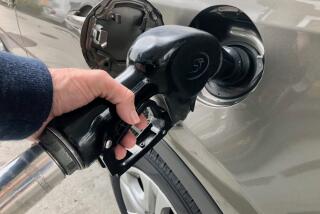Southland Gas Prices
- Share via
The use of Lundberg Survey data in “Texaco Led Run-Up in Southland Gas Prices” (May 7) was misleading. The Times said, “Texaco’s total price increases of 28.3 cents far exceeded the estimated 5 to 8 cents-per-gallon cost of producing new state-mandated cleaner burning gasoline, which began appearing at Texaco dealers the week ending March 15.” From the 28.3 cents, 14 cents in higher crude oil prices, shown elsewhere in the article, should be subtracted, leaving 14.3 cents as margin increase, not “far exceeding” the additional 5 to 15 cents refining cost of California Air Resources Board gasoline estimated April 30 by the California Energy Commission.
Your conclusion that our data show Texaco “led” price increases and other companies “chased” them is simply wrongheaded. Any begin point in history would yield a different set of presumed leaders or followers.
Using our data, you say Texaco’s increases “illustrate how a single company” can “affect commodity prices as much as the laws of supply and demand or the price of the crude oil from which gasoline is made.” Our data prove no such thing. Supply and demand and crude oil prices caused the gasoline price increases.
Your price breakdown chart sourced California Energy Commission and Lundberg data, but our data were not used in this chart. The idea that dealers on average were losing money on regular at self-serve in the month of April is preposterous. In fact, dealers had a margin of 4.2 cents in the black, not 1.2 cents in the red. Dealers lost a penny of margin since December, and will need to recover it if Southland motorists are going to have a healthy station population in the future.
TRILBY LUNDBERG
Publisher, Lundberg Letter
Los Angeles
More to Read
Inside the business of entertainment
The Wide Shot brings you news, analysis and insights on everything from streaming wars to production — and what it all means for the future.
You may occasionally receive promotional content from the Los Angeles Times.










